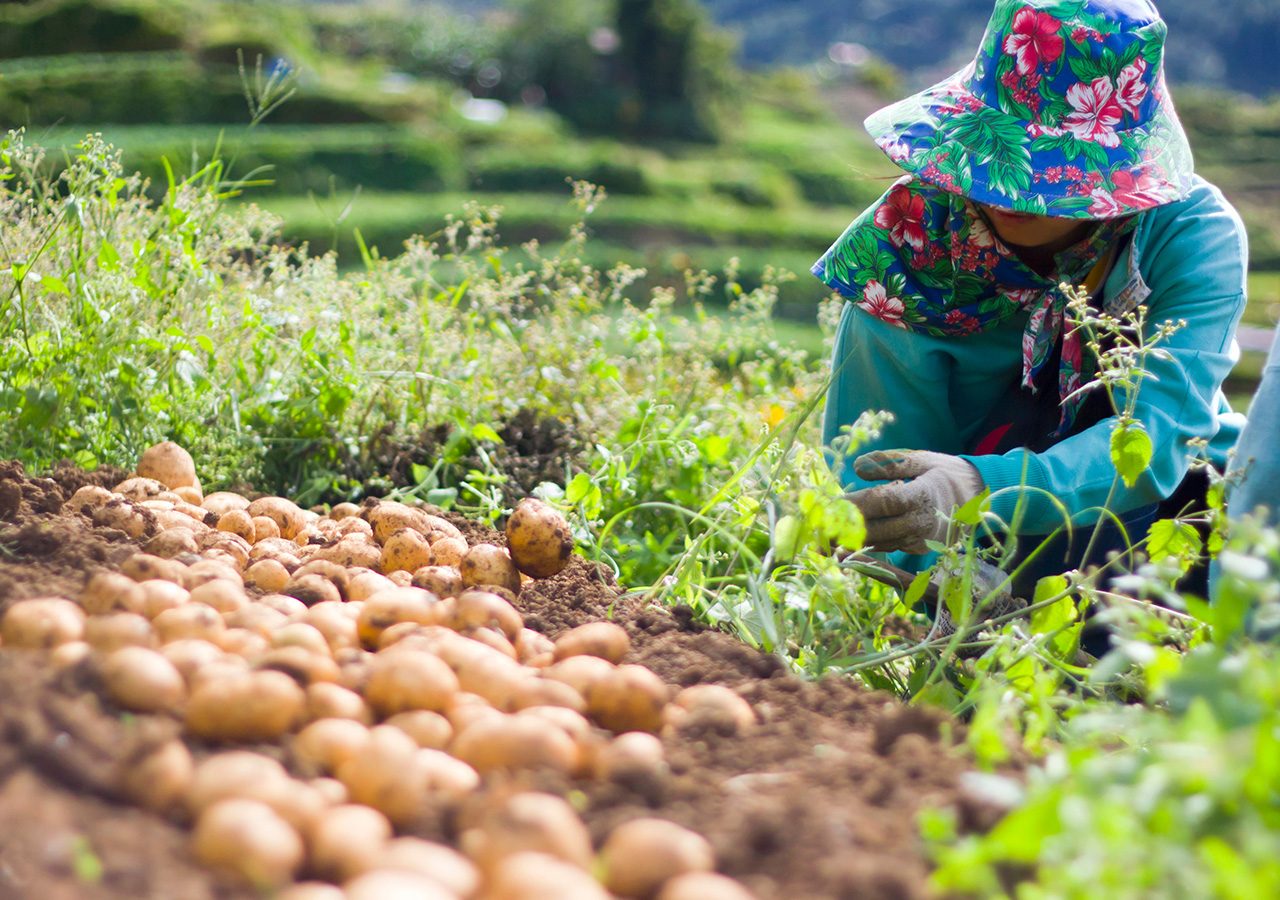SUMMARY
This is AI generated summarization, which may have errors. For context, always refer to the full article.

CAGAYAN DE ORO, Philippines – Northern Mindanao has maintained its status as the country’s second-largest contributor to agricultural production among the 17 regions, trailing only behind Central Luzon. This is despite a decline in the sector’s output last year, showing the region’s weaknesses in achieving its long-term goal of becoming an international agricultural gateway, Philippine Statistics Authority (PSA) data showed.
Its Gross Regional Domestic Product (GRDP) expanded by 7.2%, valued at P935 billion at constant 2018 prices in 2022, with the region’s economy posting a P1.07-trillion total output at current prices, a regional official of the National Economic and Development Authority (NEDA) said in a forum in Cagayan de Oro on Wednesday, December 13.
Mylah Faye Cariño, regional director of NEDA Northern Mindanao, said the 7.2% increase in the GRDP was within the Regional Development Plan’s 7.1% to 8.2% target for 2022 which she attributed to services and industry sectors.
Northern Mindanao’s services sector grew by 10.1% while the industry sector by 6.6%, contributing P509.9 billion and P238.8 billion, respectively, to the Gross Value Added (GVA) of the 2022 GRDP.
However, the region’s agriculture, forestry, and fishery sector grew only by 0.5%, though this was still a P186.6-billion GVA.
Disappointed
Northern Mindanao’s chief planner said that although Northern Mindanao’s P186.6 billion GVA was second to Central Luzon’s P244.1 billion, it posted the biggest agriculture, forestry, and fishery sector output among Mindanao regions.
Davao Region’s P146 billion was fourth behind third-rank Western Visayas whose GVA from the agriculture sector was P157 billion.
PSA data in 2022 indicated that Northern Mindanao ranked first, among other regions in the country, in pineapple, producing over 60% of the country’s annual crop, but the region dropped to second in terms of heads of cattle behind Calabarzon (Cavite, Laguna, Batangas, Rizal, Quezon) and fourth in hog production. The region topped the head inventory of cattle and hogs in previous years.
Northern Mindanao kept the second spot in banana production behind the Davao Region but dropped to third in coconut production behind the Davao Region and Zamboanga Peninsula.
The region was also third in corn production behind Cagayan Valley and Ilocos Region, and also third in chicken inventory behind Central Luzon and Calabarzon.
Some factors
PSA year-on-year figures show that the 0.5-% agriculture, forestry, and fishery sector growth rate in 2022 was the lowest in four years. The same sector in Northern Mindanao grew by 1.5% in 2019 and 2020 and was highest in 2021 at 3.8% amid the mobility limits and strict safety and health protocols during the COVID-19 pandemic.
Officials said the statistical data validate the region’s agriculture, forestry, and fishery sector vulnerabilities which must be addressed in the coming years.
Cariño said one of the reasons for the low agriculture sector output in 2022, as well as the average 20% or so contribution to the regional economy in previous years, was the relatively low farm mechanization rate of Northern Mindanao at 1.61%, compared to Central Luzon’s 2.62%. The region ranked sixth on mechanization level among 17 regions in the country.
Farm mechanization is among the age-old problems that continue to challenge the agriculture, forestry, and fishery sector, according to Chapter 7 of the Northern Mindanao Regional Development Plan (RDP) 2023-2028 that the RDC launched six months ago.
The RDP took note of other factors compounding the “declining AFF labor productivity” as compared to the industry and services sectors and these include “the rising cost of agricultural inputs resulting in high prices of basic agricultural commodities, limited access to capital and wider markets, and slow adoption of production technologies.”
The region needs 866.61 kilometers of farm-to-market roads based on local governments’ 364 project proposals for the period 2023-2027, in addition to the current 448 kilometers.
More food terminals need to be constructed because the region has only one regional food terminal with a refrigerated van located in Talakag town, Bukidnon.
Also highlighted in the RDP was the impact of the COVID-19 pandemic that magnified the vulnerability of the AFF sector to external shocks, disrupting global and local supply chains which resulted in increases in prices of farm and fishery inputs, such as fertilizers and fuel.
The African Swine Fever (ASF) also drove pork prices in Northern Mindanao, showing how the livestock sector is highly vulnerable to viral and infectious disease outbreaks.
In December 2021, Typhoon Odette devastated vital infrastructures essential to logistical support for agriculture. The region incurred damages amounting to P547.8 million to its agriculture, forestry, and fishery production sector. Irrigation infrastructure also recorded damages reached P71 million with estimated losses of P59 million.
Another issue that Northern Mindanao has to confront is the rapid and indiscriminate conversion of tracts of agricultural land to non-agricultural uses, making it difficult to figure out the true state of land use.But Cariño said that while land conversion is happening all over the region, there has been no study on the inventory of idle lands that can be used for food production. – Rappler.com
Add a comment
How does this make you feel?







![[In This Economy] Part 2 | POGOnomics: Are we banning POGOs out of fear, outrage, not rational thought?](https://www.rappler.com/tachyon/2024/06/thought-leaders-pogonomics-part-2b.jpg?resize=257%2C257&crop=292px%2C0px%2C720px%2C720px)
![[In This Economy] POGOnomics: Weighing the costs and benefits of POGOs](https://www.rappler.com/tachyon/2024/06/thought-leaders-pogonomics-part-1.jpg?resize=257%2C257&crop=279px%2C0px%2C720px%2C720px)
![[In This Economy] Is the Philippine economy stable?](https://www.rappler.com/tachyon/2024/05/philippine-economy-stable-may-10-2024.jpg?resize=257%2C257&crop=461px%2C0px%2C1080px%2C1080px)

![[EDITORIAL] Apat na taon na lang Ginoong Marcos, ‘di na puwede ang papetiks-petiks](https://www.rappler.com/tachyon/2024/07/animated-bongbong-marcos-2024-sona-day-carousel.jpg?resize=257%2C257&crop=280px%2C0px%2C720px%2C720px)
![[In This Economy] Delulunomics: Kailan magiging upper-middle income country ang Pilipinas?](https://www.rappler.com/tachyon/2024/07/in-this-economy-upper-middle-income-country.jpg?resize=257%2C257&crop=421px%2C0px%2C1080px%2C1080px)

![[EDITORIAL] Marcos Year 2: Hilong-talilong](https://www.rappler.com/tachyon/2024/07/animated-bongbong-marcos-2nd-sona-carousel.jpg?resize=257%2C257&crop=136px%2C0px%2C720px%2C720px)
![[Newspoint] A fighting presence](https://www.rappler.com/tachyon/2024/07/thought-leaders-a-fighting-presence.jpg?resize=257%2C257&crop=441px%2C0px%2C1080px%2C1080px)
There are no comments yet. Add your comment to start the conversation.